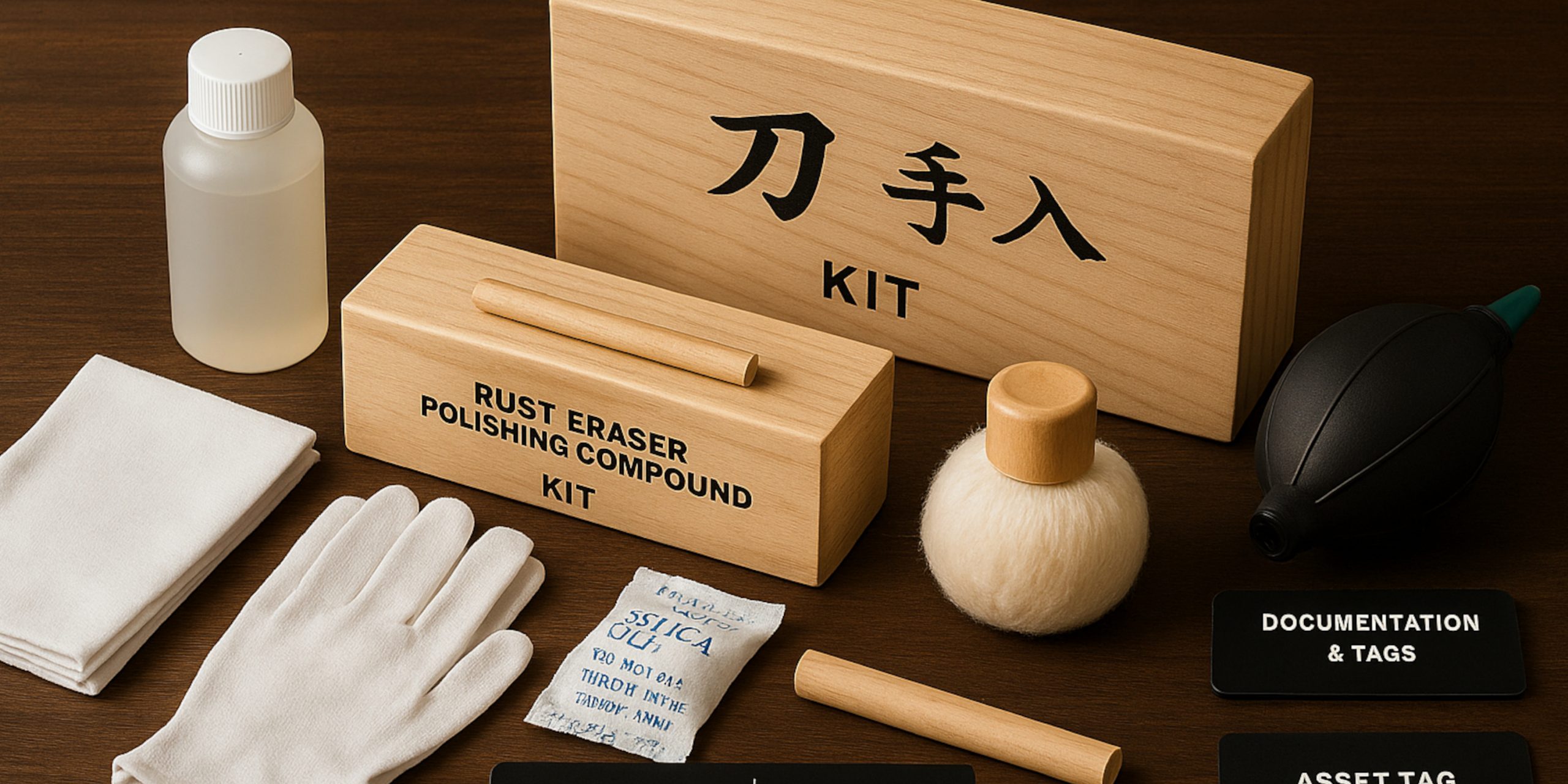
Maintaining a sword collection, whether it consists of antiques, reproductions, or modern blades, requires care, the right materials, and a disciplined routine. Without proper maintenance, even high-quality swords can deteriorate over time. Below is a structured guide to the key tools every collector should own to preserve their blades in good condition.
Microfibre Cloths and Cotton Gloves
Handling swords with bare hands can introduce oils and moisture to the steel. Wearing clean cotton gloves prevents fingerprint corrosion, especially on polished or high-carbon blades. Microfibre cloths are essential for cleaning without scratching. They are ideal for wiping away dust and applying or removing oils.
Sword Oil
Sword oil helps prevent rust and corrosion by creating a protective barrier on the blade. For carbon steel swords, light mineral oil or traditional Japanese choji oil (clove oil in mineral base) is commonly used. Stainless steel blades require less frequent oiling, but if stored in humid conditions, they still benefit from treatment.
Key considerations:
- Avoid vegetable-based oils, which can become rancid.
- Apply sparingly with a clean cloth.
Rust Erasers and Polishing Compounds
Minor surface rust can be addressed using rust erasers, which are abrasive rubber blocks designed for metal cleaning. For deeper corrosion, fine polishing compounds or metal polishes (like Simichrome or Flitz) can be used carefully, though they should be avoided on antique patinas or traditional Japanese swords, where professional polishing is preferred.
Wooden or Plastic Cleaning Rods
These tools are particularly useful for cleaning inside sword hilts, scabbards, or fittings. They allow access to tight spaces where moisture or grime can collect without damaging the finish.
Compressed Air or Manual Blowers
Moisture and dust can accumulate in the guard or hilt. Manual air blowers or cans of compressed air help dislodge debris from areas that shouldn’t be touched directly. This is especially helpful for complex hilt designs or swords with hollowed guards.
Storage Solutions: Racks, Scabbards, and Silica Gel
Storing swords properly is as important as cleaning them. Wooden racks or stands allow airflow and minimise contact that could trap moisture. Leather scabbards should be avoided for long-term storage, as they can retain moisture. Instead, store blades out of scabbards or in wooden sheaths.
Including silica gel packets in display cases or storage areas helps control humidity. Choose rechargeable silica gel for ongoing use.
Soft Bristle Brushes
Useful for cleaning dust from engraved parts, guards, pommels, or elaborate basket hilts without abrasion. Natural hair brushes, such as those made for camera lenses, are ideal.
Toolkit for Disassembly
Collectors with practical knowledge may wish to disassemble swords for deep cleaning. This should only be done on swords designed for disassembly, such as katana with mekugi pegs. A toolkit with hardwood or brass punches, small hammers, and needle-nose pliers is helpful, but caution is necessary to avoid damaging fittings or altering the structure.
Documentation and Tags
Keeping accurate records is part of responsible collection care. Asset tags, logs of oiling dates, environmental conditions, and provenance documents should be maintained. Acid-free paper and archival sleeves are recommended for long-term storage of documents.
Optional: Humidifier or Dehumidifier
Collectors in environments with high or fluctuating humidity should consider environmental control. A small dehumidifier in a display room or case can dramatically extend the life of a collection.
The Seven Swords takeaway
Sword collecting is not a passive activity. It demands responsibility and consistent care. Investing in the right tools ensures that each piece, whether a battlefield relic or a ceremonial replica, remains protected from avoidable damage. Preservation is not just about keeping swords sharp or rust-free, but respecting the craftsmanship and history they represent.



